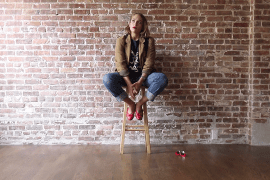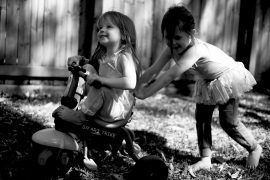What helps:
- Slow everything down
- Catch ourselves feeling dysregulated
- Just notice it without shame
- Breathe in slowly… pause… breathe out slowly…
- Listen for the story we’re telling ourselves
- Pause that voice in the head
- Put your hand on your heart and summon up your objective, compassionate inner voice
- Remember your role is to observe, nurture, connect and protect. You are gentle and strong enough to love and lead without angry words and hands
- All feelings are allowed, but not all behaviour. We can stop harmful behaviour, without harming the child
- You can listen to the feelings:
“Sweetie, I see you’re disappointed and it makes sense that you’re angry now.”
- Fulfil the needs according to their rights and your values.
There are many needs. Some are urgent and easy to fulfil, others take time and are complicated. If you listen, you will figure out how to help them fulfil what they need to change or accept what they cannot change.
- Validate the desire:
“You wish you could have that or do that! What will you do when you can? Tell me about it?”
- Trust yourselves to problem-solve!
To communicate without fear and coercion, we have to embody trust and connection, and apologise when we don’t, and try again.
If the ocean is a metaphor for emotions, we can become swimmers, lifeguards, coaches, and surfers.
A tantrum is an external discharge of internal dysregulation. We can learn how to be emotional life-savers and swimming coaches by climbing into the uncharted waters and trusting in our ability to guide us both safely through the different sensations until we are grounded back at shore.
This is tricky to do when we are triggered. A trigger is a trauma reminder. If we experienced trauma when we expressed emotions or needs, it makes sense that our body sends a signal to flee, fight, freeze or fawn.
We’re caught in a riptide when our kids’ waves of emotion meet our own and in the moment, we feel like we felt all those times before…like we’re drowning.
We can’t breathe, our heart races, we can’t think clearly, and we start to sink under.
Opposed to if we had experienced the force of currents multiple times in safe arms and learned how to stay calm and breathe in slowly paddling against the waves, and breathe out as we glide safely back to shore.
We can guide ourselves and our children through the proverbial ocean. Imagining ourselves as strong swimmers or surfers honoring every current in the ocean, accepting our human fear, and trusting our innate ability to take us out and bring us safely back to the shore. In time, with practice, we would better understand and master the waves!
It is up to us to be what we needed then and to be what our children need now, to stop the seasickness.
By extending gentleness to the child within, we can extend gentleness to the child in front of us. This practice strengthens the adult we aspire to be and the adults our children will become.
The ocean, and making friends with all emotions, give me daily inspiration to find rest and grow in resilience.
#leonardcohen says it best: “If you don’t become the ocean, you’ll be seasick every day.”
With all my love,
Lelia , Synergy Parenting Resources , South Africa.
Lelia Schott is a South African mother to four sons and two daughters (aged 22, 20, 18, 15, 8 and 5). Lelia is a certified parent coach, unschooler, independent researcher, writer, dreamer, peaceful parenting and child advocate, lover of nature, music and exercise. On her best days she can be found with her family in the garden, swimming or walking along the beach.










